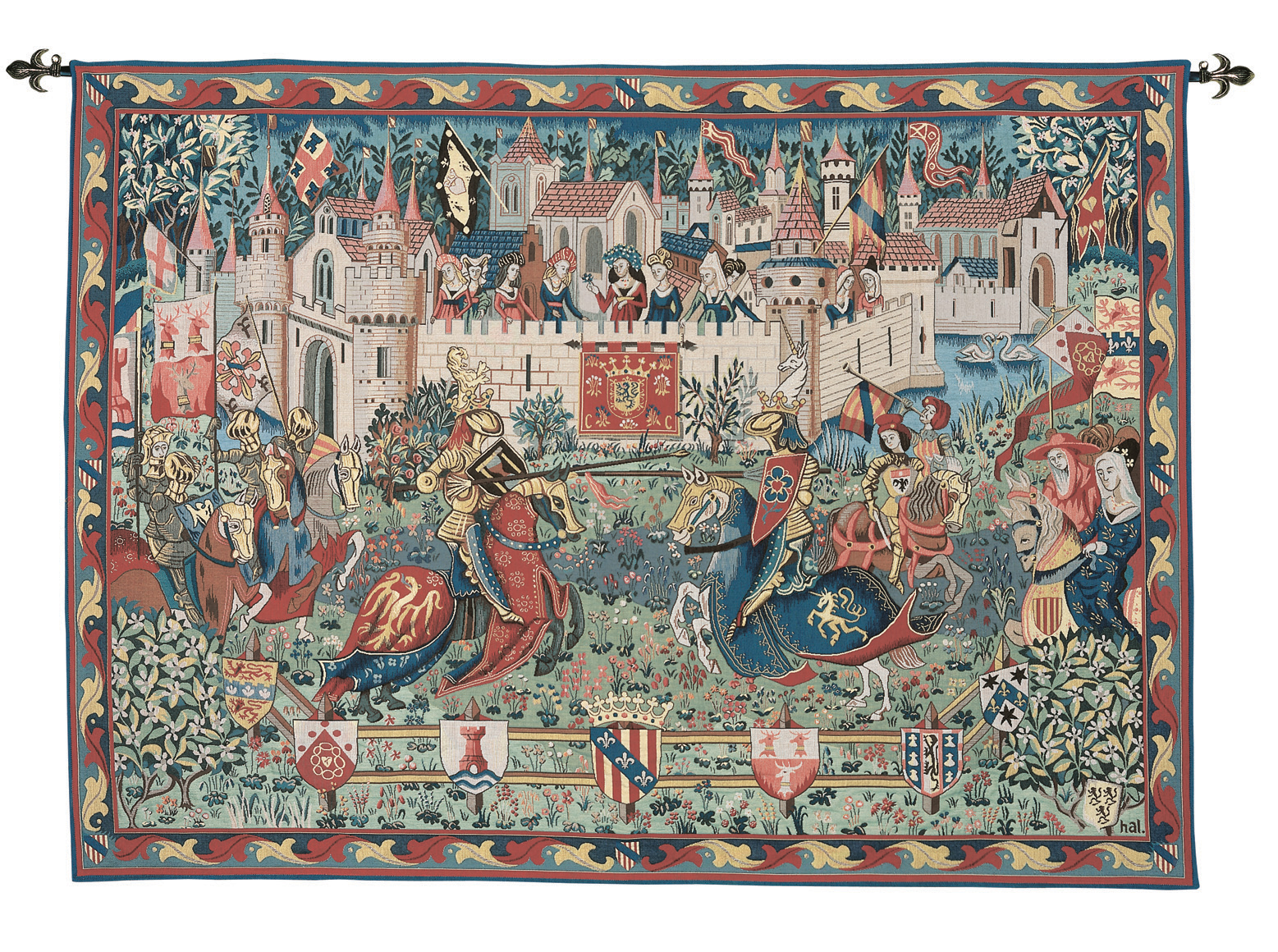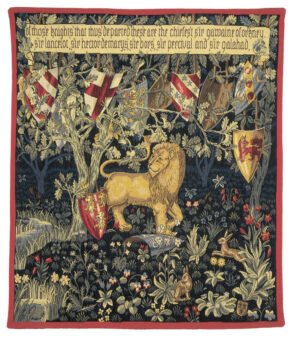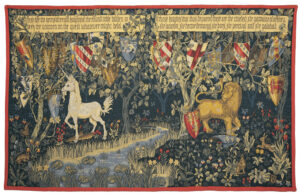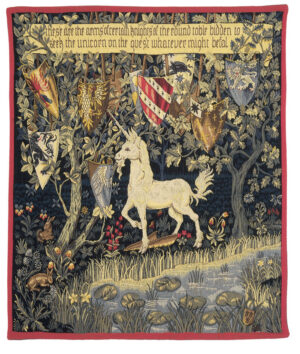Tournament At Camelot
Tournament At Camelot
In the Middle Ages, mock battles called tournaments or jousts became fashionable. They started as a means of training knights for battle and later became spectacular festivals, sometimes lasting for weeks, with a colourful display of heraldry and banners. Such tournaments became popular at the Courts of King Ren? of Anjou and the Dukes of Burgundy as they had been previously at the Royal Courts of England and France.
The aim of the contest was for each knight to knock his opponent off his horse with a wooden lance. Jousting armour was heavier and stronger than battle armour and horses were protected under their heraldic coats. This scene depicts a tournament between two knights in shining armour, held outside the walls of King Arthurs Court at Camelot, observed by the Queen and the ladies of the Court. A heraldic banner, slung from the crenulated walls of the castle, has C at the corners for Camelot.
Although, according to legend, Arthur is thought to have lived in the 5th to 6th Centuries, it is especially the writings of Sir Thomas Mallory that associate Arthur with the Medieval Renaissance. Mallorys epic of the adventures of King Arthur and his knights has been an enduring source of inspiration and evocation of the lost world of British chivalry. This tapestry was inspired from an original illustration from an ancient manuscript at the Bibliothque de Belgique.
This beautiful tapestry is woven on a jacquard loom by skilled weavers, keeping alive the centuries old tradition of tapestry manufacturing from generation to generation. This tapestry is fully lined incorporating a sleeve along the top for hanging with a Fleur de Lys hanging rod. Alternatively, this tapestry can be hung with a wooden batten which is a concealed method of hanging.
Tapestry Type Loom Woven
Loom Woven In France
Composition 95% cotton, 5% polyester
Sizes 95 x 130 cm 132 x 180 cm 186 x 26c cm





